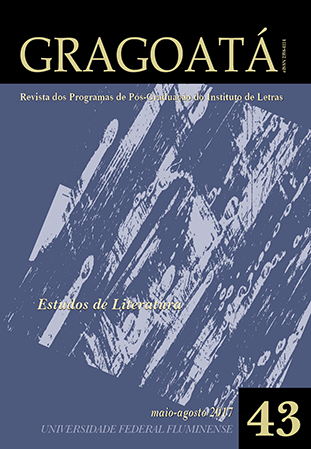The denouement with a marriage in Novelas by Miguel de Cervantes: The example of La Gitanilla for a happy marriage in Novelas by María de Zayas
DOI :
https://doi.org/10.22409/gragoata.v22i43.33496Mots-clés :
Short stories. Marriage. Exemplarity. Denouement. Conventions.Résumé
In seven out of the twelve Novelas ejemplares [Exemplary Novels] (1613) by Miguel de Cervantes, a marriage celebration represents the happy ending. After overcoming different jobs and strife, characters end up by getting married in one or more cases. Although in each involvement, marriage has its particular meaning, it always ensures that the plot is exemplary. It also needs to be emphasized that marriage, as a sign of happy denouement, has other shades in Novelas amorosas y ejemplares [Enchantements of Love] (1637) by María de Zayas. The article aims to analyze and compare the elements that make marriage exemplary in the works by both story tellers. The analysis shows how María de Zayas rejects some practices found in Cervantes’s tales that structure the happy ending in marriage to provide greater autonomy to spouses and to reduce parental authority. The comparative study concludes that Zayas, possibly inspired by Gitanilla’s claims in her Novelas, significantly changes the usual formulas of plot outcome with a wedding to propose a set of prenuptial criteria that lead their exemplary female protagonists to a happy marriage.
---
Original in Spanish.
---
DOI: http://dx.doi.org/10.22409/gragoata.2017n43a781.
Téléchargements
Téléchargements
Publiée
Numéro
Rubrique
Licence
AUTORIZAÇÃO
Autores que publicam em Gragoatá concordam com os seguintes termos:
Os autores mantêm os direitos e cedem à revista o direito à primeira publicação, simultaneamente submetido a uma licença Creative Commons Atribuição 4.0 Internacional (CC BY 4.0), que permite o compartilhamento por terceiros com a devida menção ao autor e à primeira publicação pela Gragoatá.
Os autores podem entrar em acordos contratuais adicionais e separados para a distribuição não exclusiva da versão publicada da obra (por exemplo, postá-la em um repositório institucional ou publicá-la em um livro), com o reconhecimento de sua publicação inicial na Gragoatá.
A Gragoatá utiliza uma Licença Creative Commons - Atribuição CC BY 4.0 Internacional.











